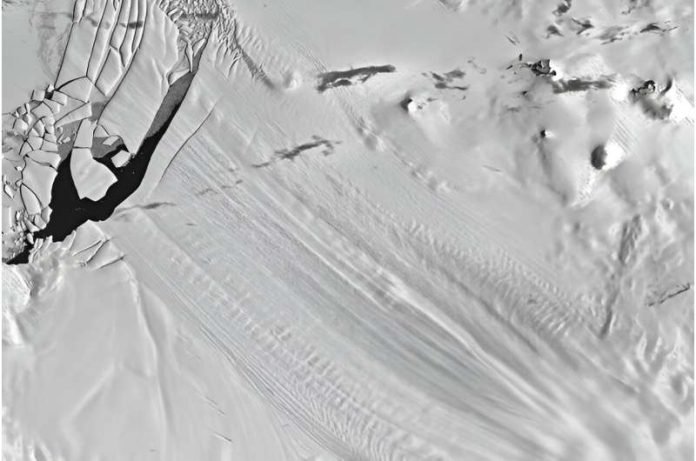
In a significant discovery, scientists have found that Antarctica’s natural ice anchors, essential in holding back the continent’s land ice from sliding into the ocean, are diminishing at an alarming rate, more than doubling over the past 50 years.
These ice formations, known as pinning points, play a crucial role in stabilizing the floating ice shelves that act as protective barriers for Antarctica’s land ice.
However, recent research indicates that over a third of these pinning points have reduced in size since the year 2000, signaling a potential acceleration in the continent’s contribution to global sea level rise.
This research, detailed in the journal Nature, marks a pivotal moment in our understanding of Antarctica’s ice dynamics and their impact on global climate change.
The study, led by researchers from the University of Edinburgh, is groundbreaking in its examination of Antarctic ice shelf thickness changes dating back to 1973, thanks to the utilization of satellite imagery from the NASA/United States Geological Survey (USGS) Landsat program.
This is the first study of its kind to extend observations so far into the past, providing a much clearer picture of how Antarctica’s ice shelves—and the pinning points that support them—have evolved over time.
Pinning points are essentially undersea ice anchors that latch onto elevations on the ocean floor, acting as crucial stabilizers for the floating ice sheets along 75% of Antarctica’s coastline.
These ice sheets cover an area as large as Greenland and are integral to the continent’s ability to retain its land ice. The loss of these pinning points could lead to an increase in the flow of ice from land into the ocean, thereby raising global sea levels.
The research team’s analysis of pinning point changes across three distinct periods—1973 to 1989, 1990 to 2000, and 2000 to 2022—revealed a concerning trend.
Initially, between 1973 and 1989, only 15% of pinning points showed a reduction in size, a figure that escalated to 25% in the period from 1990 to 2000, and further to 37% from 2000 to 2022. This progression highlights a marked acceleration in the deterioration of these crucial ice formations.
Dr. Bertie Miles expressed alarm at the shift observed over the past five decades, from limited and localized ice shelf melting to a more widespread phenomenon of ice shelf unanchoring. The concern now lies in how many more of these essential pinning points will continue to diminish in the future.
Professor Robert Bingham emphasized the broader implications of this study, linking the melting of Antarctica’s pinning points directly to climate warming’s impact on the natural systems that slow down the transition from ice melt to sea-level rise.
This research underscores the urgent need for global action to reduce carbon emissions, aiming to mitigate the adverse effects of climate change and preserve the stability of Antarctica’s ice shelves.
The research findings can be found in Nature.
Copyright © 2024 Knowridge Science Report. All rights reserved.



